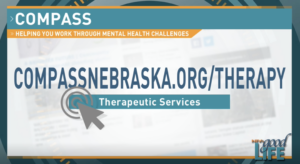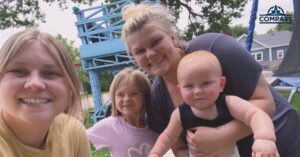Foster Care 101- Part 2
This is the second part in our series titled Foster Care 101. Click here to read Part 1.
In our last post, we explained that children can be removed from their homes for a variety of reasons. When a child is removed from their home, the first priority that the Child and Family Safety Specialist (CFSS) at the Department of Health and Human Services (DHHS) has is to locate an appropriate placement for the child. Throughout the history of foster care, even within Nebraska itself, this process has looked very different. Today, DHHS looks first to relatives who are able to provide care for the children. Sometimes this means a grandma, an aunt or uncle, or occasionally a family friend. If this is not a possibility, DHHS will send out a referral to all agencies (such as Compass) within the service area. This referral typically includes very limited information about the child. It might include the reason for the removal, how many children and their ages. The agency will then identify families who are able to meet that need. The greatest needs agencies have to fill are those of teenagers and siblings. Sometimes DHHS has to ask agencies outside of their service area to meet the needs of children if there are not enough foster homes in the area to meet the need. This means that a child is removed from their school, friends, neighborhoods, and often have to travel long distances for visits with their parents.

The first week a child is in a new placement are often the most challenging for foster families. There is a lot of paperwork, meetings and appointments. Families have a need for approved respite providers, meals, and maybe even yard work. Often, children come into care with little to no clothing, toys, or any other items for their bedrooms. Compass provides placements bags to help transition through the first few days. These bags are carry on size luggage with blankets, hygiene products, snacks, toys and a night light.
Within the first week of placement, children typically have supervised visitation with their biological parents. It can be tricky to line up matching schedules with everyone involved, so it is very important for the foster family to be as flexible as possible in assisting these visits to happen. Almost always, the permanency goal for the child at the beginning is reunification with their parents. Throughout the course of the case these visits will fluctuate and increase or decrease as directed by the CFSS worker. The average amount of time a child is in foster care is 9 to 12 months. In Nebraska, 60% of all children who are removed from their home go back home to their biological parents. During the transition time, children will have longer and more frequent visits with parents. They will also have less supervision. Supervision workers will drop in periodically throughout the visits, but will not be present the entire time. Eventually, children will have overnight stays, and then transition to being home permanently.
In the situation where biological parents continue to struggle with meeting their case plan, at the 12-15 month mark, the judge will determine a new permanency plan. When a child has been in foster care for 15 out of 22 months, the county attorney can file Termination of Parental Rights (TPR). The permanency plan for the child is dependent on their age and each situation. In the event that reunification is not possible, there are three other options. The first and most permanent is adoption. In this case, after the parental rights have been terminated, children are free for adoption. Their current foster home may adopt them, or the agency and DHHS will look for a suitable adoptive home. The second option is guardianship. Typically, children are given guardians when they are older, or when TPR does not occur, but the family team and judge agree that it is in the child’s best interest to not be reunified at the time. The third option is Independent Living. Children who are 16-18 years old can enter into a transitional living plan. Sometimes they stay with their foster parent, other times they enter into a program. The goal during this time is for them to gain skills necessary to be successful independent adults on their 19th birthday.
If you are interested in learning about becoming a foster parent, contact Alisa@COMPASSnebraska.org. Follow along in our series Foster Care 101. Next week: How to pick an agency that is right for you.



